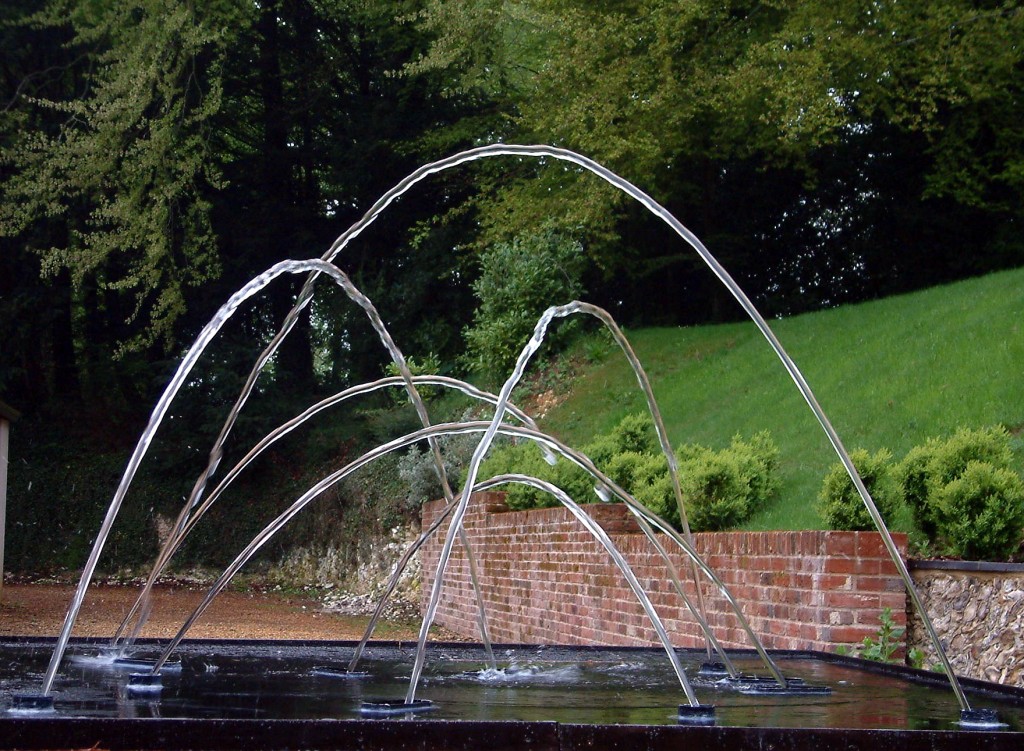
Tarantella
The main characteristic of laminar flow in jetted water is its ability to hold together in a smooth integrated filament throughout its throw, without breaking up while airborne.
During the period that I have been developing the techniques necessary for obtaining laminar flow, I have become fascinated by other possibilities offered by this phenomenon. The filament or rope of water arcing through the air can be broken or interrupted without disturbing its general trajectory. The impression given is of slugs or snakes of water flying through the air, with a life of their own - impossible to describe adequately in words, but beautiful and captivating to witness. See video footage here
The consequence of animating a comparatively static composition of jets by intermittently breaking the flows can result in an effect that is either random and chaotic or one that is programmed and controlled. A colleague has produced for me a tool that enables me to compose choreographed sequences of commands that can be set to produce programmes of leaping and dancing laminar jets, at the press of a button.
John Spurling said: 'The idea of a directed stream becomes elaborate and skittish in a larger piece called Tarantella, still being worked on. Six jets of water spring out of the four sides of a platform and, forming arcs of different height and length, disappear into holes the other side, making a spidery pattern in three dimensions. Then suddenly the jets are cut off, so that the arcs of water dive into the holes like performing eels. A moment later the jets begin again and are again cut off and the eels leap and whisk away as before.'

